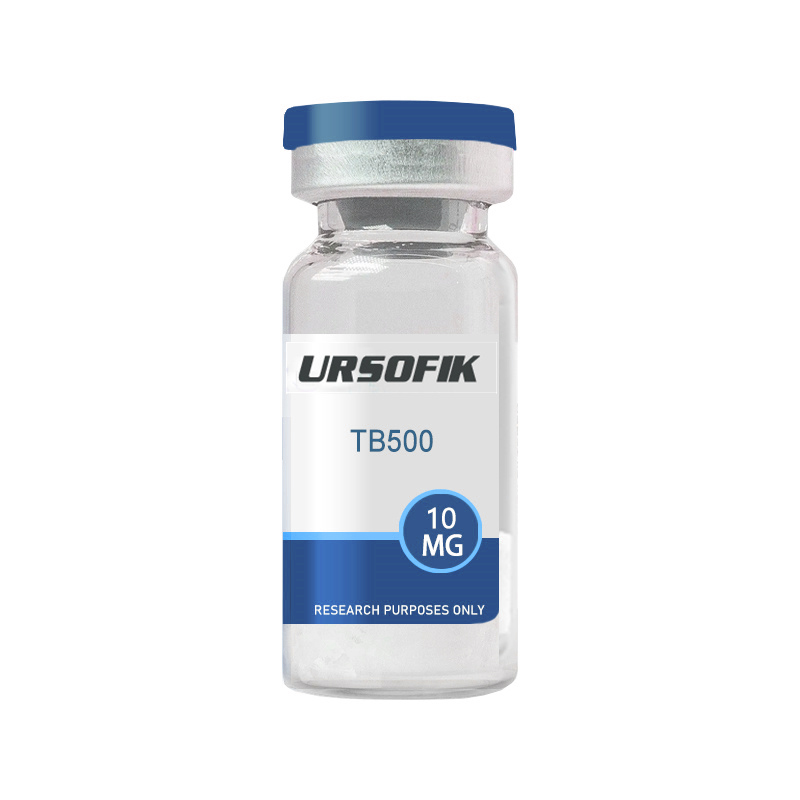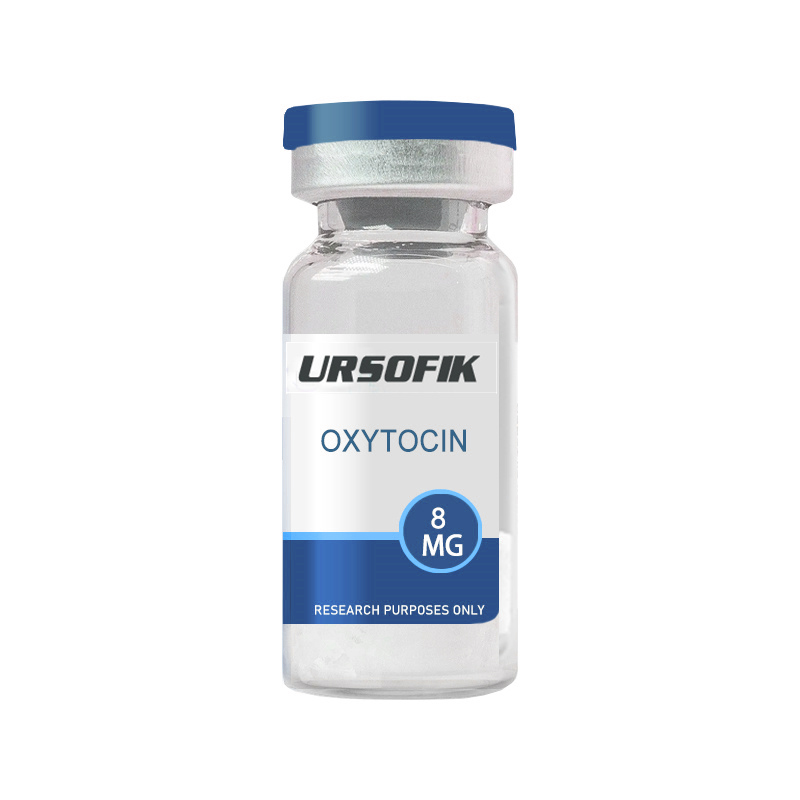

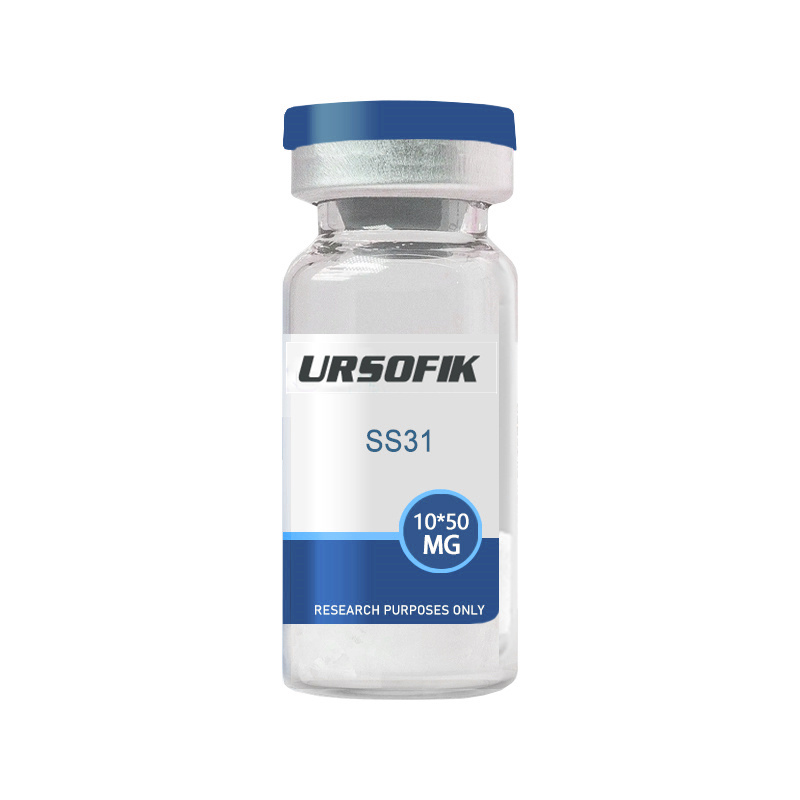
SS-31 Research SS-31 (also called elamipretide) is a peptide that specifically targets mitochondria. Clinical evidence indicates that SS-31 demonstrates promise in addressing numerous medical conditions stemming from mitochondrial dysfunction. SS-31 Mechanisms of Action SS-31 operates within cells by selectively aggregating inside the inner mitochondrial membrane, where it binds to cardiolipin, a critical component of mitochondrial structure and function. By binding to cardiolipin, SS-31 helps maintain the shape of the mitochondria’s inner folds, known as cristae, which facilitates their energy-producing capabilities. SS-31 also functions as a potent antioxidant, neutralizing damaging reactive oxygen species (ROS). This action helps to prevent oxidative stress and maintain mitochondrial function. Further, SS-31 promotes the flow of electrons through the mitochondrial respiratory chain, which boosts ATP production – the cell’s energy currency. Lastly, SS-31 has been shown to prevent cell death by inhibiting the activation of pro-apoptotic proteins and preserving mitochondrial integrity. SS-31 and Mitochondrial Dysfunction Mitochondria are known as “powerhouses” within cells an ...
Read More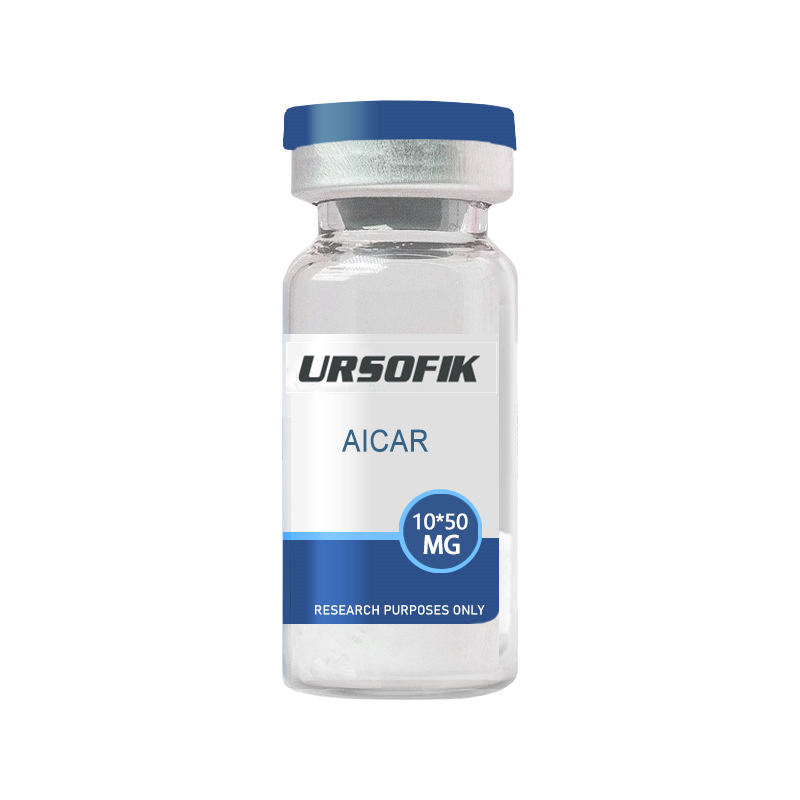
What is AICAR? AICAR, also known as 5-aminoimidazole-4-carboxamide nucleoside, is an AMP-activated protein kinase agonist. AICAR (5-amino-4-imidazolecarboxamide nucleoside) is endogenously produced from intermediates in the purine biosynthetic pathway. In human athletes, urine [AICAR] correlates with sex (male > female), season of exercise (in-competition > out-of-competition), and sport (weightlifting > football). Plasma AICAR is hypothesized to increase with exercise. An LC-MS-MS method was developed to quantify AICAR in plasma collected from racehorses immediately before and after racing. After racing, plasma AICAR levels were elevated in the majority of horses, independent of age, sex, or performance in the group. After intravenous administration of AICAR, mean arterial blood pressure decreased dramatically despite compensatory increases in cardiac output and heart rate. Exercise-induced increases in AICAR may promote vasodilation. This research was supported by the Horse Racing Drug and Testing Alliance, the Pennsylvania Horse Racing Commission, the Pennsylvania Harness Riders Association, the Meadows Standardbred Owners Association, and the Pennsylvania Riders Benevolent and Protective Associat ...
Read More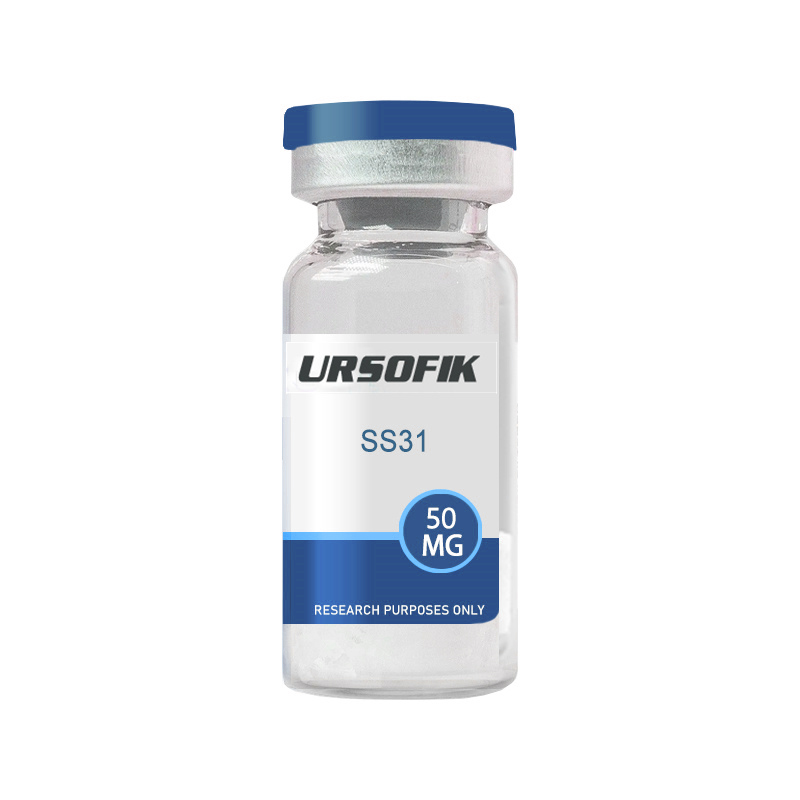
SS-31 Research SS-31 (also called elamipretide) is a peptide that specifically targets mitochondria. Clinical evidence indicates that SS-31 demonstrates promise in addressing numerous medical conditions stemming from mitochondrial dysfunction. SS-31 Mechanisms of Action SS-31 operates within cells by selectively aggregating inside the inner mitochondrial membrane, where it binds to cardiolipin, a critical component of mitochondrial structure and function. By binding to cardiolipin, SS-31 helps maintain the shape of the mitochondria’s inner folds, known as cristae, which facilitates their energy-producing capabilities. SS-31 also functions as a potent antioxidant, neutralizing damaging reactive oxygen species (ROS). This action helps to prevent oxidative stress and maintain mitochondrial function. Further, SS-31 promotes the flow of electrons through the mitochondrial respiratory chain, which boosts ATP production – the cell’s energy currency. Lastly, SS-31 has been shown to prevent cell death by inhibiting the activation of pro-apoptotic proteins and preserving mitochondrial integrity. SS-31 and Mitochondrial Dysfunction Mitochondria are known as “powerhouses” within cel ...
Read More
PE-22-28 Research PE-22-28 is a synthetic derivative of the naturally occurring peptide Spadin, which binds to TREK-1, a protein found in areas of the brain that control mood, memory, and learning. It is being investigated for its potential benefits in treating depression, improving memory and learning, aiding stroke recovery, and potentially combating neurodegenerative diseases such as Alzheimer’s. PE-22-28 and Treatment of Depression PE-22-28 has shown promising results in the treatment of depression. The peptide specifically blocks the TREK-1 channel, a mechanism that has been linked to antidepressant activity. In comparison to spadin, PE-22-28 has demonstrated better specificity and affinity for the TREK-1 channel, with an IC50 (half maximal inhibitory concentration) of 0.12 nM versus 40-60 nM for spadin. In behavioral models of depression, such as the forced swimming test, mice treated with PE-22-28 showed a significant reduction in immobility time, indicating an antidepressant effect. Furthermore, PE-22-28 was found to have improved in vivo stability and bioavailability compared to spadin, maintaining its activity for up to 23 hours instead of 7 hours. PE ...
Read More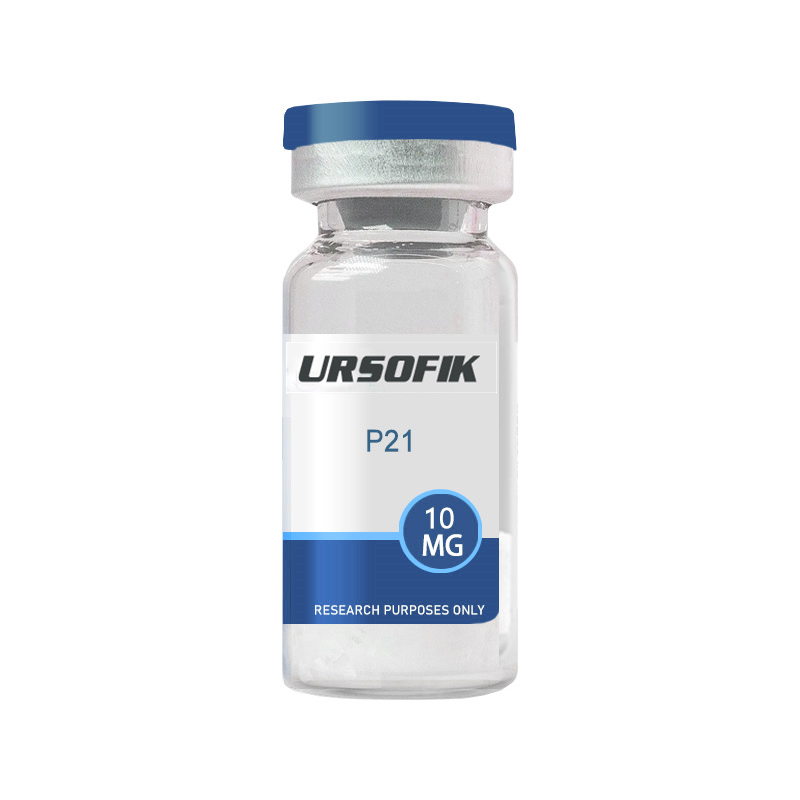
what is P21 P21 is a modified synthetic CNTF analog. CNTF is a natural protein mediator of neuronal growth in humans. The effects of CNTF have been studied primarily in the nervous system, although there are receptors for the peptide in other parts of the body, such as bones. Studies have shown that it can promote the synthesis of neurotransmitters and the growth of neurites. It can also protect neurons and their supporting cells from inflammatory attacks. In addition to its neurotrophic effects, CNTF can increase satiety, thereby reducing food intake. CNTF and cerebrolysin are not the same molecule. P21 is also not the same as cerebrolysin. It is discussed below and compared to P21. Recombinant CNTF was developed under the brand name Axokine. It is being tested for the treatment of amyotrophic lateral sclerosis and is not currently available for sale. Interestingly, the body quickly develops antibodies to Axokine, suggesting that it may be possible to use P21 and exogenous CNTF together in some cases to increase CNTF levels while keeping antibody activity to a minimum . What does P21 do? In simple terms, P21 can enhance cognition and prote ...
Read More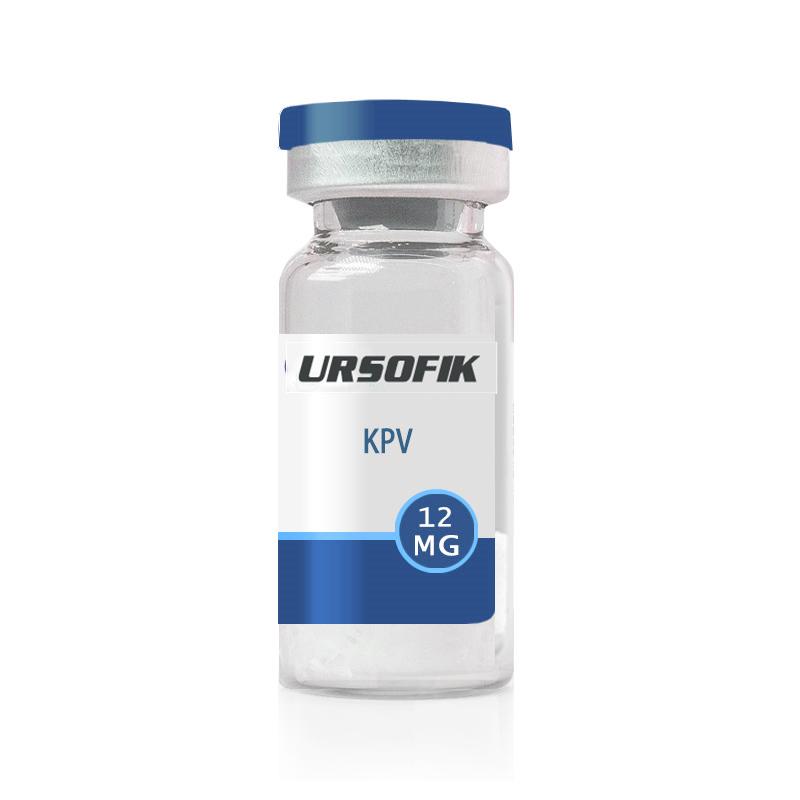
KPV Peptide Research KPV PEPTIDE AND INTESTINAL INFLAMMATION The primary subject of KPV research has been focused on its potential for reducing intestinal inflammation. In mouse models of inflammatory bowel disease (IBD), it appeared to reduce inflammatory infiltrates, MPO activity, and overall histological evidence of inflammation. KPV appeared to help mice to recover faster and gain weight. Delivery of KPV using nanoparticles functionalized with hyaluronic acid appeared to help direct inflammation to targeted intestinal locations. Thus the suppression of TNF-alpha may reduce inflammation and cause mucosal healing in mice. The researchers note that: “These results collectively demonstrate that our HA-KPV-NP/hydrogel system has the capacity to release HA-KPV-NPs in the colonic lumen and that these NPs subsequently penetrate into colitis tissues and enable KPV to be internalized into target cells, thereby alleviating ulcerative colitis.” Studies have suggested that the peptide also may reduce NF-kappaB and mitogen-activated protein kinase (MAPK) activity. TNF-alpha, NF-kappaB, and MAPK inhibition together ameliorate the inflammatory changes in the intestine. Mice exposed to KPV appeared to exhibit less colonic i ...
Read More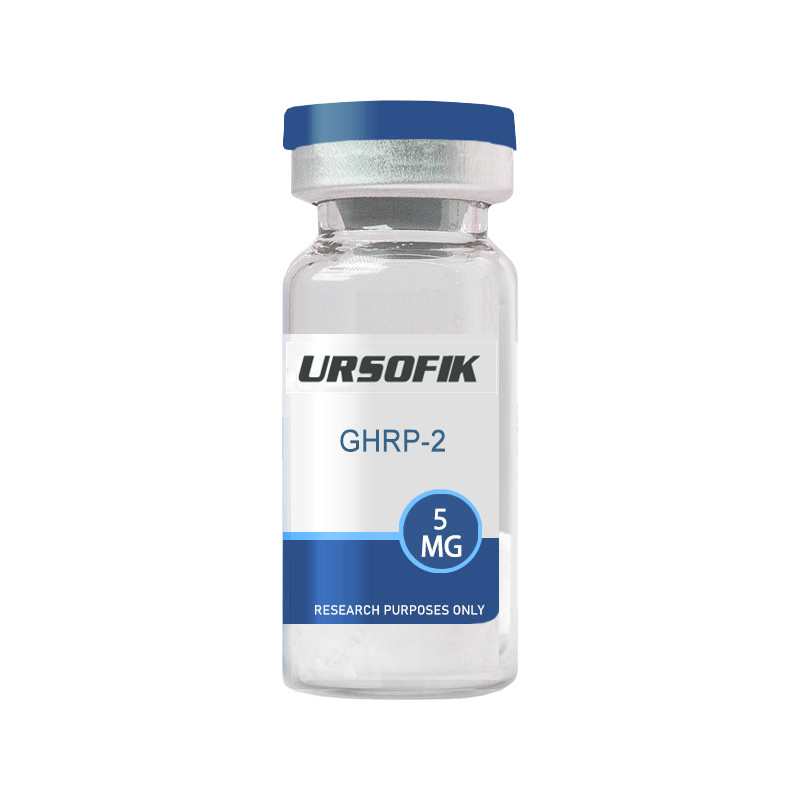
GHRP-2 Research GHRP-2 and Muscle Structure Studies in yaks have shown that the GHRP-2 peptide appears to stimulate muscle growth in two ways: by enhancing protein synthesis and accumulation, and by reducing protein degradation. [3] Studies have shown that GHRP-2 may help overcome natural growth limitations in yaks due to food deprivation, adverse environmental conditions, and disease. The researchers also suggest that "GHRP-2 enhances muscle protein deposition primarily by upregulating protein synthesis pathways." The most important observation is that GHRP-2 may reduce muscle atrophy by inhibiting atrogin-1 and MuRF1 proteins, which are thought to regulate muscle degradation pathways. GHRP-2 and the Heart Studies in fetal heart cell culture lines have suggested that GHRP-2 and its analogs (GHRP-1 and GHRP-6) may help protect heart cells by minimizing apoptosis, or programmed cell death. [4] The peptide appears to protect the heart muscle from reduced blood and nutrient supply, which in some cases can trigger cardiac arrest. Studies of the GHRP-2 analog Hexarelin have shown that these peptides associate with specific receptors. It has been hypothesized that the receptor CD36 may play a prominen ...
Read More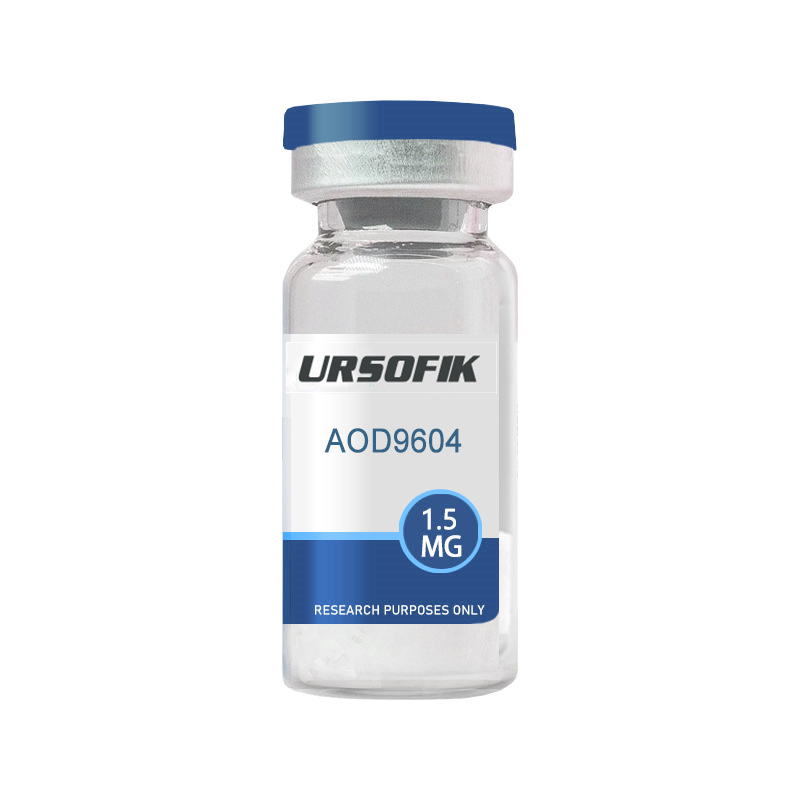
What is AOD-9604? AOD-9604 is a synthetic peptide and modified fragment of hGH, specifically the C-terminal region (amino acids 177-191). It was developed with the intention of mimicking the fat-burning properties of hGH without its muscle-building effects, which are not always desired in the context of weight loss. How AOD-9604 Works AOD-9604 stimulates the pituitary gland, similar to how natural growth hormones regulate fat metabolism. It activates lipolysis, the breakdown of fats, and inhibits lipogenesis, the formation of fats. The peptide has been shown to reduce body weight in animal studies and in some human trials. AOD-9604 and Metabolic Health Research has shown that AOD-9604 can influence lipid metabolism in several ways. It has been observed to increase lipolysis, which is the breakdown of fat, and reduce lipogenesis, the process of transforming non-fat food materials into body fat . These effects were noted in obese mice and beta(3)-adrenergic receptor knock-out mice, suggesting that AOD-9604’s actions are not mediated directly through the beta(3)-adrenergic receptor, a known facilitator of lipolysis . ...
Read More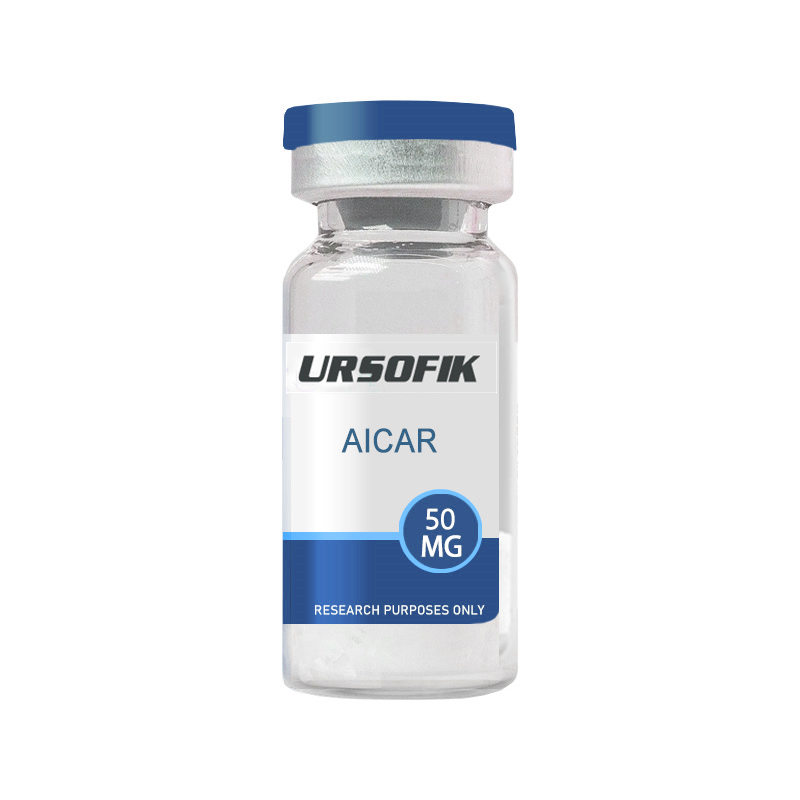
What is AICAR? AICAR, also known as 5-aminoimidazole-4-carboxamide nucleoside, is an AMP-activated protein kinase agonist. AICAR (5-amino-4-imidazolecarboxamide nucleoside) is endogenously produced from intermediates in the purine biosynthetic pathway. In human athletes, urine [AICAR] correlates with sex (male > female), season of exercise (in-competition > out-of-competition), and sport (weightlifting > football). Plasma AICAR is hypothesized to increase with exercise. An LC-MS-MS method was developed to quantify AICAR in plasma collected from racehorses immediately before and after racing. After racing, plasma AICAR levels were elevated in the majority of horses, independent of age, sex, or performance in the group. After intravenous administration of AICAR, mean arterial blood pressure decreased dramatically despite compensatory increases in cardiac output and heart rate. Exercise-induced increases in AICAR may promote vasodilation. This research was supported by the Horse Racing Drug and Testing Alliance, the Pennsylvania Horse Racing Commission, the Pennsylvania Harness Riders Association, the Meadows Standardbred Owners Association, and the Pennsylvania Riders Benevolent and Protective Associat ...
Read More
Adamax Peptide Research Adamax is a nootropic peptide that is considered an improved version of Semax, a neuropeptide. It has been gaining attention for its potential benefits in cognitive enhancement, neuroprotection, and neurogenesis. Adamax and Cognitive Function Adamax is a potent derivative of the neuropeptide Semax, known for its nootropic properties. It is believed to enhance cognitive function by increasing the levels of Brain-Derived Neurotrophic Factor (BDNF) and improving the sensitivity of TrkB receptors in the hippocampus. Research suggests that regular and sustained use of Adamax may promote long-term changes in brain function, potentially resulting in improved cognitive abilities over time. Adamax and Neuroprotection Adamax is thought to possess neuroprotective properties, which protect neurons (nerve cells) in the brain from harm, degeneration, and oxidative stress. By exerting neuroprotective effects, Adamax may help reduce the negative impacts of factors that cause neuronal loss, which can lead to conditions such as neurodegenerative disorders and age-related cognitive decline. Adamax and Neurogenesis Adamax may promote neurogenesis, the fo ...
Read More
Is HGH a steroid? Is HGH (human growth hormone) a steroid? No, HGH is a peptide hormone, not a steroid. Peptides are substances made up of two or more amino acids. People often confuse human growth hormone (HGH) with other substances that can improve athletic performance, but HGH is not a steroid. What is HGH Your body produces HGH in the pituitary gland. Your body produces new cells every day to replace those that degenerate and die over time. HGH helps your body produce these replacement cells. When your body can't repair its cells or produce enough new cells, you begin to show signs of aging. What happens when your body starts to produce less HGH As we age, the pituitary gland slows down the production of growth hormone. This process can begin in our thirties. By our forties and fifties, the body begins to feel the effects of this growth hormone deficiency. You may notice one or more of the following signs of low growth hormone: It becomes increasingly difficult to maintain an ideal weight through diet, exercise, and healthy habits. Even people who have always been "naturally thin" may find themselves gaining weight and not wanting to lose it. As a result, you may feel depressed. You ma ...
Read More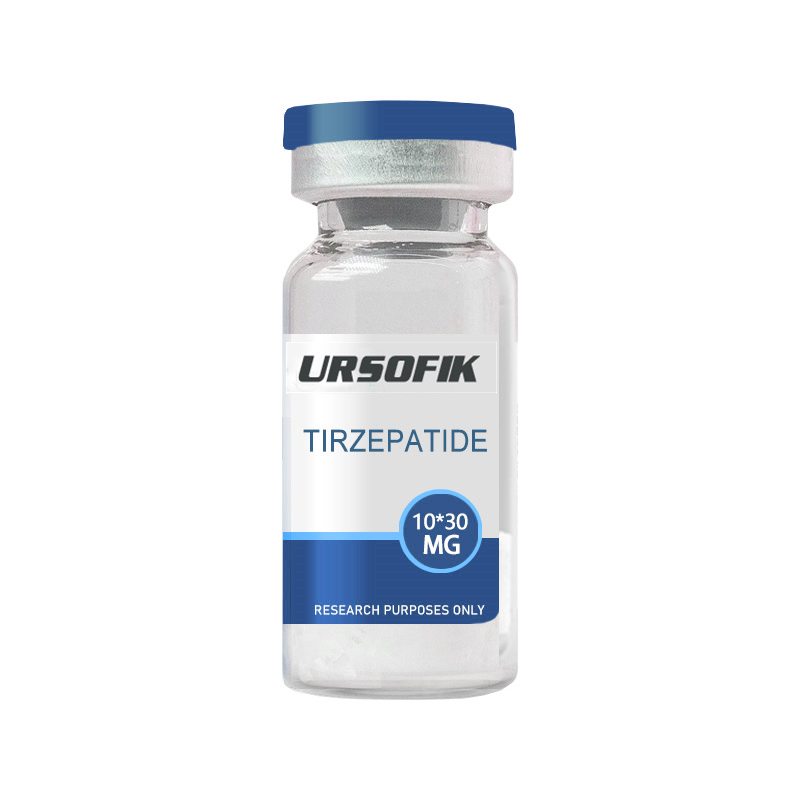
What is Tirzepatide? Tirzepatide is a synthetic peptide that acts as a dual agonist at the glucose-dependent insulin secretagogue polypeptide (GIP) and glucagon-like peptide-1 (GLP-1) receptors. The compound has been studied for its potential to affect glucose regulation and energy balance. Researchers are particularly interested in Tirzepatide because of its potential role in treating metabolic disorders, including those associated with insulin resistance and excess weight. How does Tirzepatide work? Tirzepatide is designed to activate both GIP and GLP-1 receptors, which are involved in regulating insulin secretion and glucose homeostasis. By stimulating these receptors, Tirzepatide can enhance insulin secretion in response to elevated blood glucose, inhibit glucagon release, and slow gastric emptying. In addition, this dual agonist effect may help reduce appetite and caloric intake by acting on receptors within the central nervous system, which may be beneficial for weight management. What are the potential benefits of Tirzepatide? Research suggests that Tirzepatide may offer several potential benefits: Improved blood sugar control: Tirzepatide may help r ...
Read More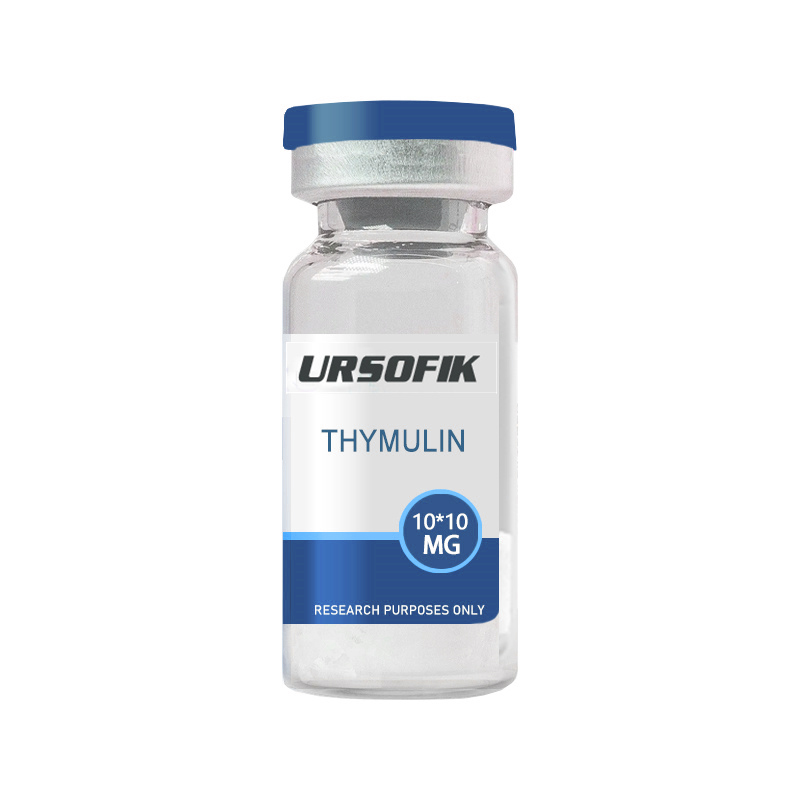
Structure Sequence: Glu-Ala-Lys-Ser-GIn-Gly-Gly-Ser-Asn Molecular formula: C 33 H 54 N 12 O 15 Peptide purity: greater than 98% Additional details: TFA-free, mannitol-free Storage: This product must be stored at 4°C. Not suitable for freezing. Zinc-thymol is for external use only Description Hair loss occurs in a large proportion of the adult population and increases with age. Both men and women can experience hair loss, but it is more common in men. In the West, an estimated 50% of men will experience noticeable hair loss before the age of 50. The most common form of hair loss in men is androgenic alopecia (male pattern baldness). Most hair loss is due to follicular inactivation, which means that the follicles stop growing hair. Literature also suggests that with aging, the fat layer of the scalp thins, leading to the inactivation of stem cells that regulate hair growth, which can lead to hair loss. Zinc deficiency can also lead to hair loss. Thymosin is a nonapeptide from the thymus gland. Zinc and thymosin are two natural compounds involved in hair follicle growth that have been found to promote hair growth. Early reports of t ...
Read More
What is Thymosin Alpha 1? Thymosin Alpha 1, also known as TA1, is a 28 amino acid peptide. It is naturally produced and isolated from the human thymus, a small gland that makes and trains immune cells (T-cells). The T-cells help your immune system fight disease and infection. Thymosin Alpha 1 was first isolated from the calf thymus in 1977. Since then, two additional methods have been developed to extract this peptide from its source. These include solid-state synthesis (the popular method) and genetic engineering processes. Like the source (thymus) from which it is isolated, TA1 possesses the ability to enhance, restore and modify your immune response. It has also shown promise in various clinical applications, including viral, fungal, and bacterial infectious diseases and cancer. Recent research has indicated that TA1 might be used for the treatment of severe sepsis. The peptide has also been reported to prevent invasive infections in bone-marrow transplanted patients. In clinical studies, it has displayed promise as a vaccine adjuvant. How does Thymosin Alpha 1 Work? Thymosin Alpha 1 has a dual mechanism of action: Immune Modulating ...
Read More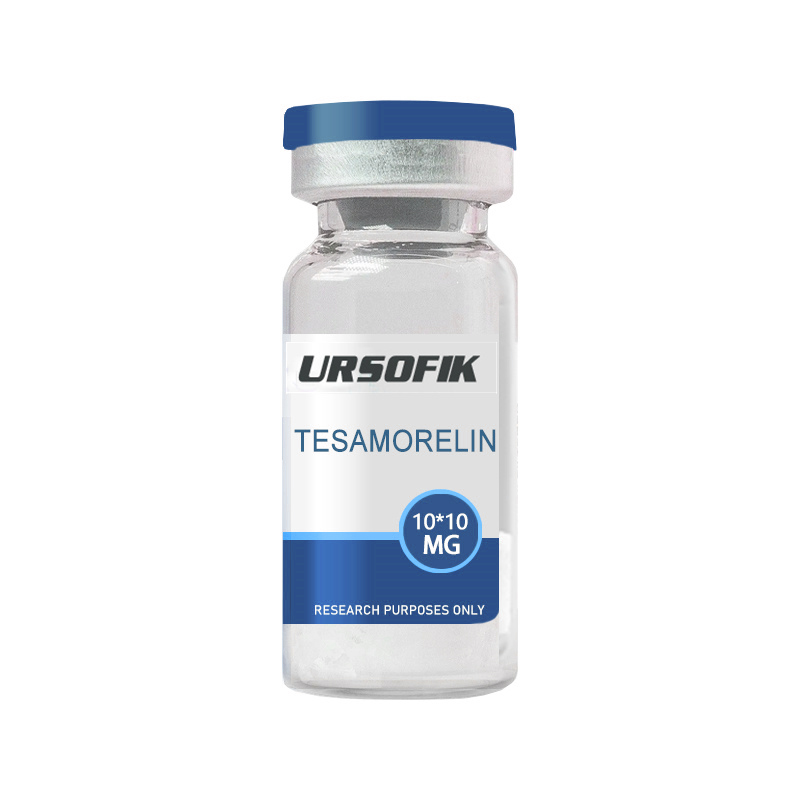
What is Tesamorelin? Tesamorelin is a stabilized synthetic analogue of Growth Hormone Releasing Hormone (GHRH),not specifically from the hypothalamus, used for the reduction of excess abdominal fat in HIV-patients with lipodystrophy. Lipodystrophy is a metabolic condition often associated with insulin resistance, fat redistribution, and hyperlipidemia associated with antiretroviral therapy for the treatment of HIV infection. Mechanism of Action Tesamorelin works by mimicking the natural Growth Hormone Releasing Hormone, stimulating the pituitary gland to release more growth hormone. This increase in growth hormone leads to various metabolic effects, majorly the reduction of excess abdominal fat, and helps improve body composition. By binding to GHRH, Tesamorelin causes a series of physiological reactions that result in a reduction of visceral fat in the abdominal area. Potential Benefits of Tesamorelin The following are the benefits of Tesamorelin: Fat loss and improvement in body composition: One of the well-known benefits of tesamorelin is the visceral fat reduction. Research shows that tesamorelin may help in the reduction of excess abdominal fat and also help improve the body compo ...
Read More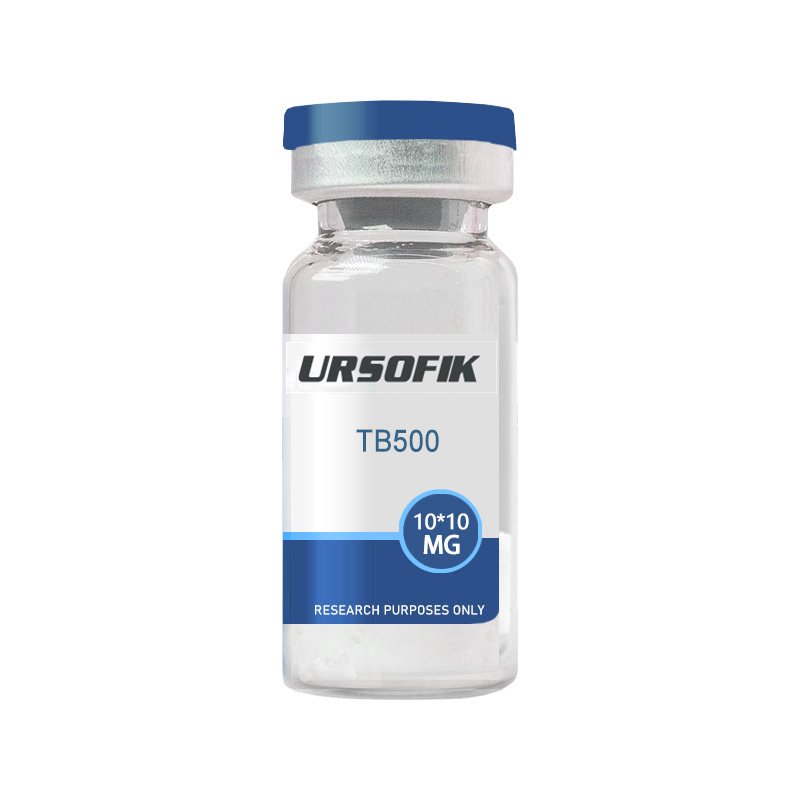
What is TB-500? TB-500 is a 43 amino acid synthetic analog of thymosin B-4 (TB-4), which occurs naturally in nearly all mammalian cells. TB-500 is known for its effects on actin, cell migration, and wound healing. Animal models and in vitro studies have shown that TB-500 can improve blood vessel growth, accelerate wound healing, reduce inflammation, and promote production of extracellular matrix. The peptide is currently being studied for its ability to reduce oxidative stress in spinal cord injuries, improve recovery after heart attacks, and have a variety of anti-aging effects. TB-500 Mechanism of Action TB-500 is the active domain of TB-4 and primarily acts as an actin-binding protein. Actin is an important component of cellular structure and makes up microfilaments. Microfilaments are responsible for giving cells their shape, protecting the integrity of cell membranes, allowing cells to move/migrate, and certain steps in cell reproduction. Actin is also one of the main components of muscle protein. Without actin, muscles cannot contract. Actin-binding proteins such as TB-4 sequester actin monomers (single units of actin), thereby protecting them from degradation and allowing them to polymerize into microfilament ...
Read More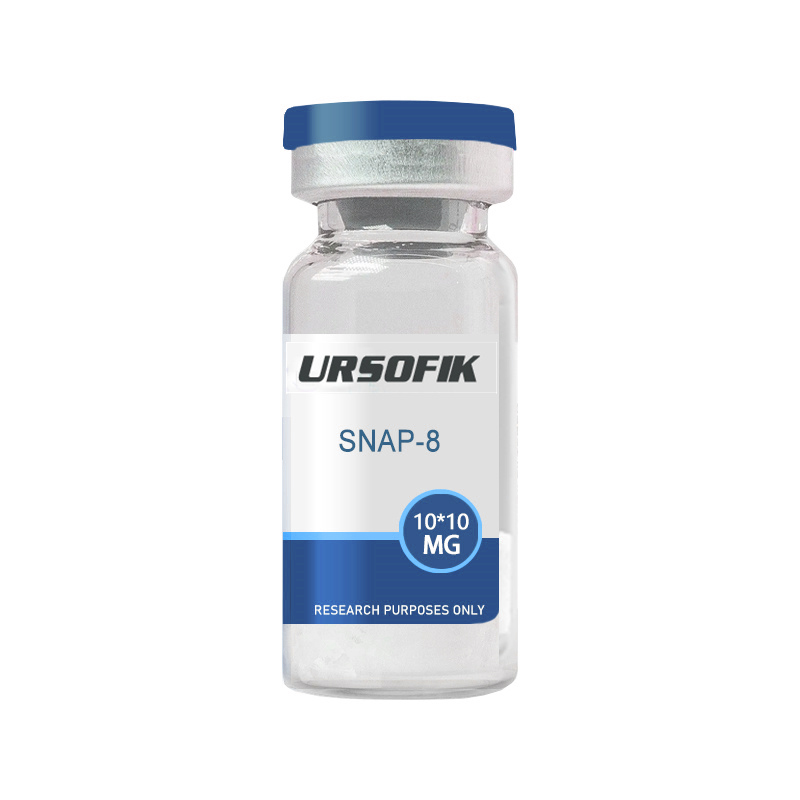
Key Features: Wrinkle Reduction: Effectively reduces expression lines and wrinkles. Botulinum Toxin Alternative: Provides a safer, non-invasive alternative to traditional botulinum toxin treatments. Skin Smoothness: Improves skin texture and smoothness. Anti-Aging: Reduces signs of aging and maintains a youthful appearance. Research Support: Studies have shown it to be effective in reducing the depth and formation of wrinkles. Description SNAP-8 is a natu rally derived, non-toxic, non-invasive peptide that has been shown to have the potential to reduce facial wrinkles and improve skin appearance. It is an extension of the hexapeptide ARGIRELINE, known for its ability to modulate muscle contraction, thereby reducing the formation of fine lines and wrinkles. Structure and Modifications SNAP-8 is an octapeptide composed of glutamyl and heptapeptide amino acids. Its structure allows it to mimic the N-terminus of SNAP-25, a protein involved in the SNARE complex, which is essential for neurotransmitter release and muscle contraction. Synthesis and Studies SNAP-8 has been synthesized using a variety of methods, including solid phase synth ...
Read More
How does Retatrutide work? Retatrutide may function by activating multiple receptors, including those for glucagon-like peptide-1 (GLP-1), glucose-dependent insulinotropic polypeptide (GIP), and glucagon. This multi-receptor activity could lead to enhanced insulin secretion, reduced appetite, and increased energy expenditure. The compound is being studied for its potential influence on the central nervous system, gastrointestinal tract, and peripheral tissues. and peripheral tissues. Potential Benefits of Retatrutide Studies on Retatrutide suggest that it may offer a variety of potential benefits, including: Weight Management: By potentially reducing appetite and increasing energy expenditure, Retatrutide may help manage weight. Improving Glycemic Control: The compound may enhance insulin secretion and sensitivity, helping to better regulate blood sugar. Lipid Metabolism: Retatrutide peptides can affect lipid metabolism, potentially reducing lipid levels and improving cardiovascular health markers. Broad Metabolic Effects: Due to Retatrutide's multi-receptor effects, it may offer a wide range of metabolic benefits to ...
Read More
Description PT-141, also known as bremelanotide, is an innovative new peptide hormone therapy for men and women that improves sexual function. PT-141 is an effective and highly effective treatment for erectile dysfunction and increased libido in men, and for improving sexual arousal disorders in women. PT 141 peptide gives you desire and drive while increasing blood flow to the penis or vagina and clitoris, restoring intimacy and passion to your relationship. PT 141 addresses these issues and helps resolve sexual difficulties. PT-141 works directly through the nervous system to increase arousal, desire, and sexual satisfaction. Drugs such as Viagra and Cialis work through the vascular system and only give you an erection. However, PT-141 not only gives you an erection, it also gives you desire and drive, restoring intimacy and passion to your relationship. Benefits of PT 141 PT 141 works by stimulating melanocortin receptors in the brain. It can be injected subcutaneously or inhaled through the nose to treat sexual dysfunction. It is known to work quickly, usually in less than an hour. This peptide can offer many benefits to men and women with decreased libido and sexual performance. Trea ...
Read More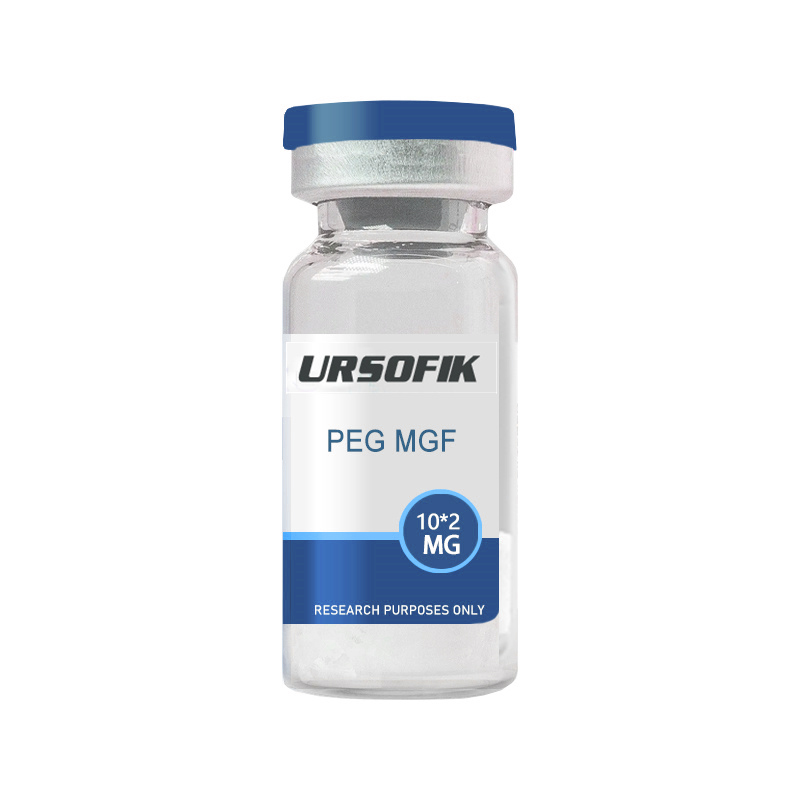
What is PEG-MGF peptide? PEG MGF, short for PEGylated mechano-growth factor, is a two-component anabolic peptide. PEG MGF is a well-known derivative of the compound insulin-like growth factor-1 (IGF-1). IGF-1 is thought to play an important role in the regulation of growth hormone (GH). In addition, this chemical may also help promote bone and tissue growth. PEG MGF promotes muscle growth by prompting various receptors to drive myoblasts to divide. Several studies have also shown that PEG MGF can increase the number of muscle stem cells that bind to existing muscle cells, thereby promoting muscle growth. PEG MGF has a short half-life of about 5 to 7 minutes. To address this, this experimental chemical is PEGylated. PEGylation is performed by adding polyethylene glycol (PEG) to the peptide. By adding the PEG group, the half-life of MGF can be safely and effectively extended to 48-72 hours. Possible Applications of PEGylated Mechano-Growth Factor Peptides: PEG MGF Peptides and Bone Repair In the animal model mouse, MGF treatment improved the migration of chondrocytes (cells responsible for cartilage formation) from the bone to the cartilage where they are needed. PEG ...
Read More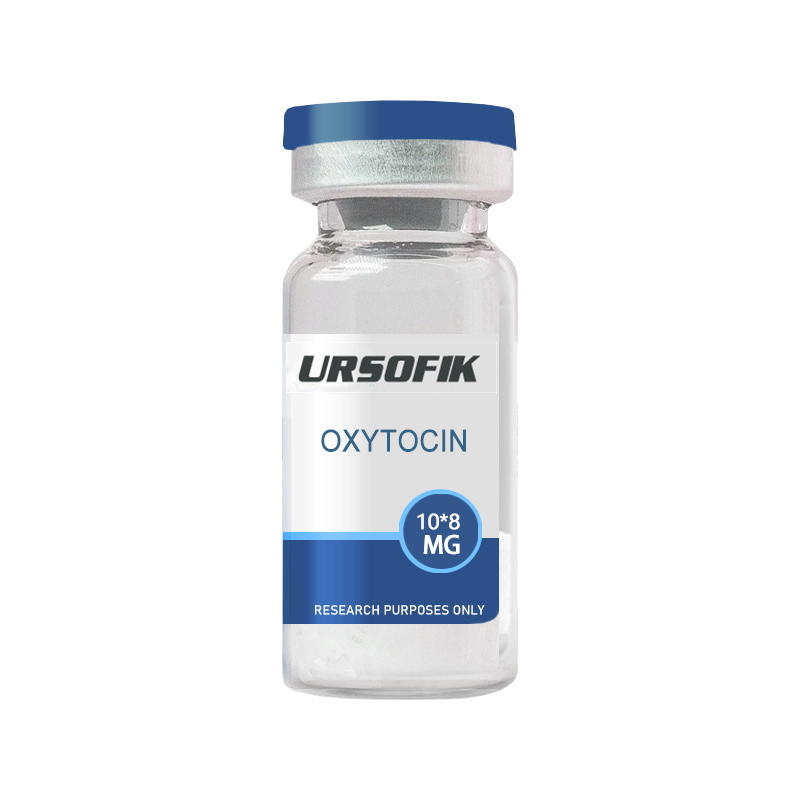
What is oxytocin? The peptide hormone is made up of 9 amino acids. It is produced in the hypothalamus, an area of the brain that controls heart rate, blood pressure, and digestion. OT is released into the bloodstream by the posterior pituitary gland. Oxytocin was discovered by Sir Henry Dale in 1996. He found that extracts from the posterior pituitary gland of humans caused the uterus of pregnant cats to contract. Sir Henry Dale also coined the name oxytocin, which means "quick labor" in Greek. This peptide hormone controls many functions. It has an impact on labor, milk secretion during breastfeeding, and bonding with newborns in humans. It also plays an important role in sexual arousal, romantic attachment, and other social interactions. It is also known as the "love hormone." A 2012 study found that levels of this hormone were significantly higher in newly-in-love people than in singles. The findings suggest that it may play an important role in the initial stages of a relationship. Pure Rawz sells this product for research use only. How does oxytocin work? Research suggests that it interacts with neural pathways responsible for processing motivation-related stimuli. In ...
Read More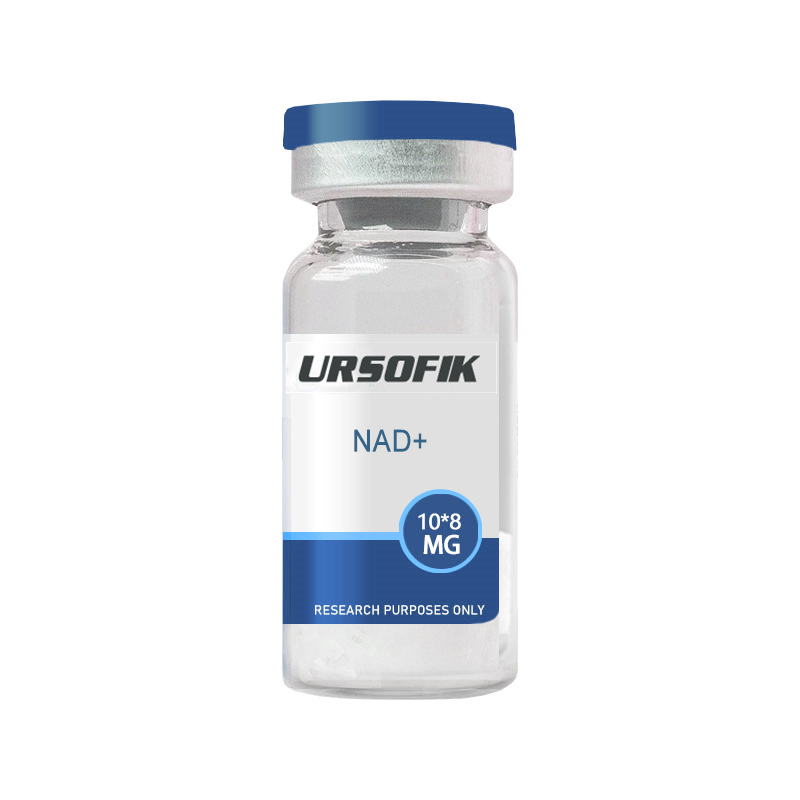
NAD+ Research A large number of animal and human studies have been conducted on the potential applications of NAD+. Here are some relevant findings: NAD+ Anti-Aging Many people are looking for anti-aging secrets, and a study found that nicotinamide adenine dinucleotide (NAD+) levels decline with age, which may cause cell damage and may shorten lifespan. NAD+ acts as an enzyme cofactor and substrate for a variety of regulatory proteins in many important biological pathways. A large number of studies have shown that increasing NAD+ levels in tissues or cells can slow the aging process. The safety and efficacy of NAD+ have been clinically studied. There is evidence that supplementing NAD+ precursors or inhibiting NAD+ degradation may enhance metabolic activity. Studies have shown that supplementing NAD+ precursors can slow the aging process in mice. To date, the anti-aging properties of NAD+ have not been confirmed in humans. The role of NAD+ in neurodegenerative diseases Several articles mentioned that NAD+ depletion has been observed in both normal and accelerated aging. Neurodegeneration is seen in several accelerated aging dis ...
Read More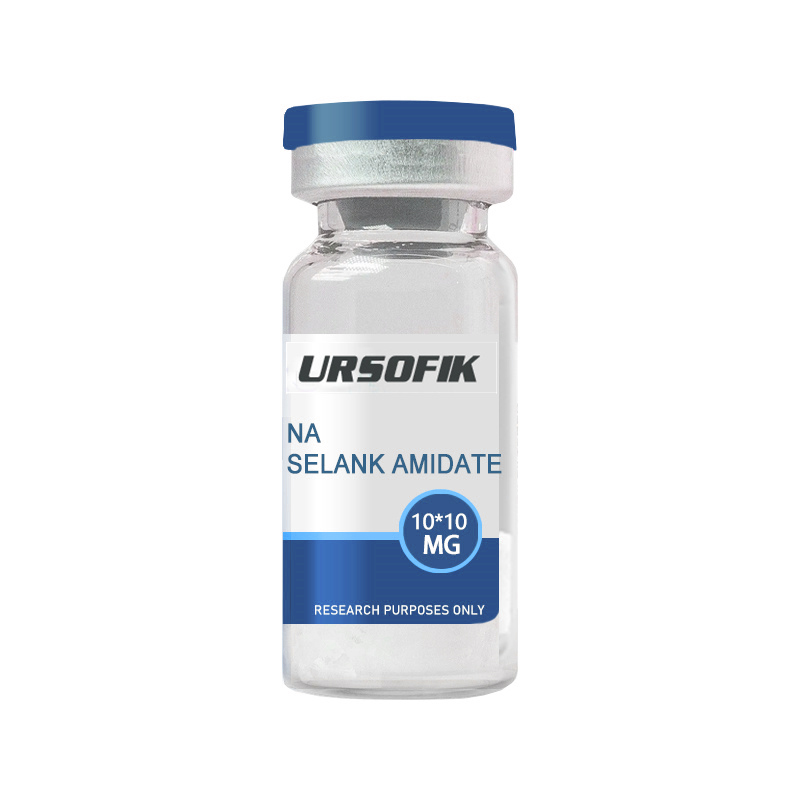
Description N-Acetyl Selank Amidate (commonly referred to as NA Selank) is a modified version of the peptide Selank. In recent years, it has received much attention for its potential anxiolytic, nootropic, and anti-inflammatory properties. NA Selank Amidate has been extensively studied in laboratory settings for its effects on anxiety, cognitive function, and neuroprotection. Structure and Modifications NA Selank Amidate is a modified version of Selank with the addition of an acetyl group to the N-terminus of the peptide chain and an amide group to the C-terminus. These modifications work together to enhance the overall stability and bioavailability of the peptide, increase its potential for use in biological studies, and theoretically enhance its potential to cross the blood-brain barrier and increase its interaction with neurotransmitters. The amino acid sequence of NA Selank Amidate is Ac-Thr-Lys-Pro-Arg-Pro-Gly-Pro-NH2. Pharmacokinetics and Pharmacodynamics NA Selank Amidate has been modified to have a longer half-life than the base Selank form, meaning it remains active longer. This is primarily due to its increased stability against degradation by enzymes and other factors. The peptide has been ...
Read More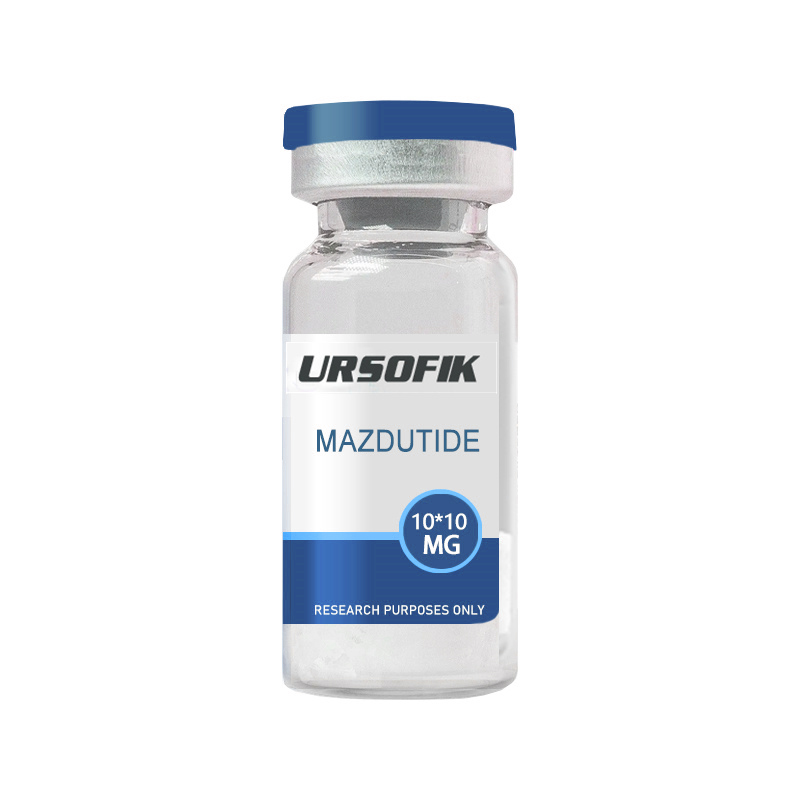
What is Mazdutide? Mazdutide 10MG, commonly referred to as a multi-agonist peptide, is an investigational compound being studied for its potential benefits in obesity and blood sugar management. Similar to compounds such as tirzepatide and semaglutide, mazdutide is known for its high efficacy. Researchers believe that it may significantly enhance weight loss when combined with a proper diet and exercise regimen. Additionally, studies are exploring its effects on metabolic regulation and conditions such as hypertension. How does Mazdutide work? Mazdutide stands out in obesity research due to its multifaceted mechanism of action: • Multi-receptor agonist Mazdutide targets multiple receptors involved in regulating metabolism. This action slows gastric emptying, lowers post-meal blood sugar levels, and promotes satiety. As a result, it can reduce food intake and improve energy balance. • Enhances satiety By acting on the satiety center of the brain, mazdutide helps reduce appetite and prolong feelings of fullness. This can reduce calorie intake and support weight loss efforts. • Glucose Optimization Mazdutide slows gastric emptying and regulates the release o ...
Read More

